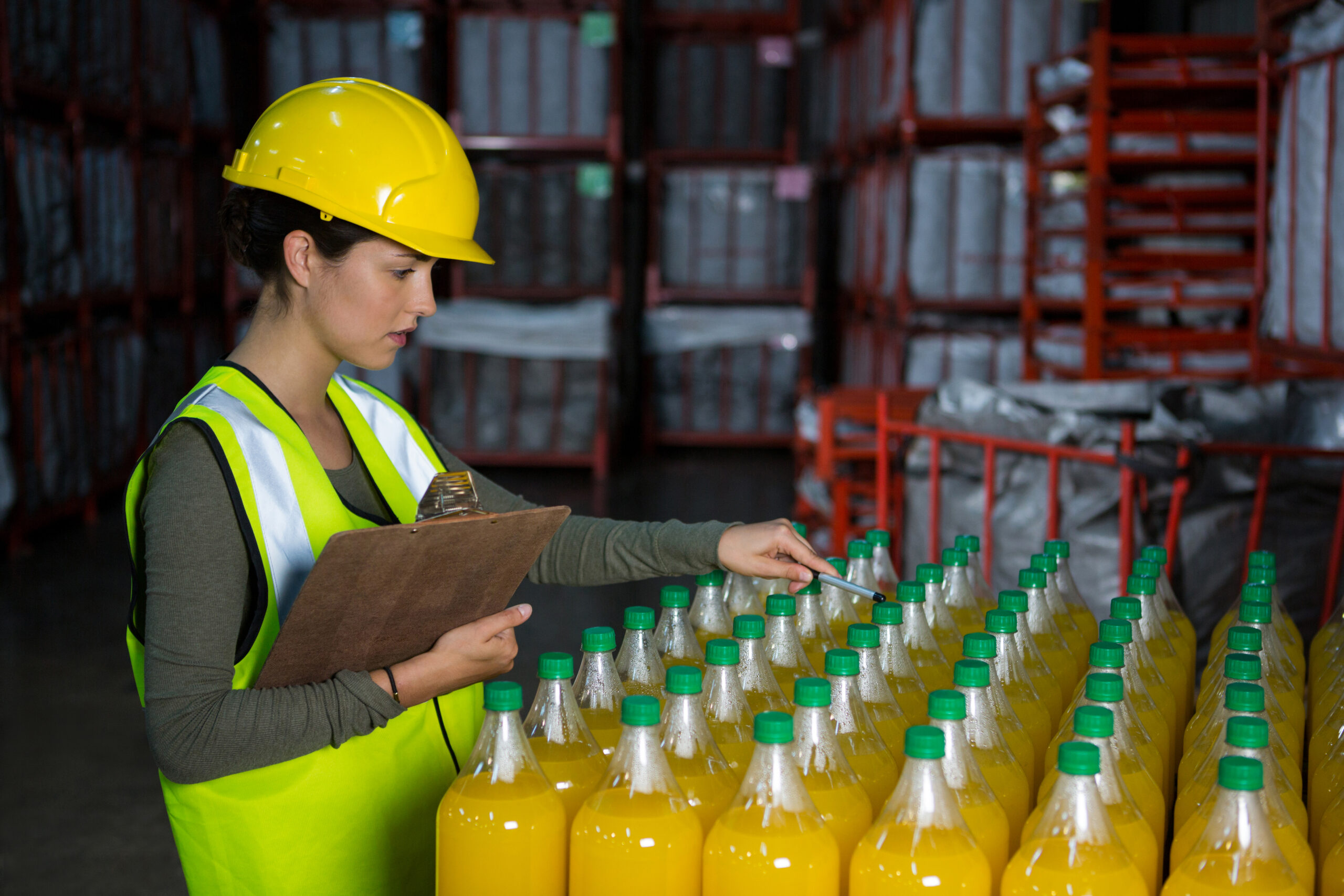Supply management is a crucial aspect to the success of any retailer that deals with both physical and online products. We cannot fail to consider that self-service products must be very well exposed. When we talk about this management, one of the biggest concerns of retail and industry is inventory disruptions on the shelves.
When a product is not available and well exposed for customers to buy, it seriously hurts a business’s sales. However, the problems with retail disruptions on the shelves is old and chronic, whether they are ruptures of products without stock, whether they are due to divergent inventory, whether it is because inventory is in the wrong place and today there are new technologies that can solve companies.
In this blog, we will discuss some strategies to avoid stock breakage on the shelves, keep your customers satisfied and not have financial losses.
Happy reading!
What is disruption?
You know those moments when you go to the supermarket, approach the shelf and do not find the product you usually buy?
Well, the rupture is the absence of a product, that is, when it is not available on the shelf of the Point of Sale (POS) of a retail chain. This can be caused by a number of factors such as: low inventory, transportation problems, distribution, suppliers, planning, inventory divergence, lack of pricing, exposure in a place where the consumer does not have access or simply by an error of the replacement team.
Regardless of the cause, the disruption, be it of any nature, can have a significant impact on sales and customer satisfaction, as they end up going to another store, buying another brand, acquiring a similar product or giving up the purchase.
Types of rupture:
Commercial where the purchase failed and left the stock to be zero;
Operational where the cause is due to operational problems. In this case often the stock is positive;
Logistics where the cause is in the logistics operation desynchronized with the demand of each store.
What are the causes and consequences of the rupture?
Causes of rupture
The disruptions happen by several factors, which encompass several sectors such as commercial, operational and managerial, they are:
- Poor inventory management: when the company does not properly monitor inventory levels, and end up without a product on the shelf.
- Supply issues: Delays in product delivery or problems with suppliers can lead to gondola breakage.
- Distribution problems: Failures in the distribution of products can lead to the lack of an item on the shelf.
- Unexpected demand: Sometimes a product may be more popular than expected, which leads to a gondola break.
- Pricing issues: If a product is incorrectly priced or has no price tag, it can be taken off the shelf.
- Ghost product: the shopkeeper offers the product, acquires it, is stored and exposed, but the customer can not find it on the shelves.
Consequence of gondola rupture
The consequences of gondola rupture can be significant for companies, including:
- Loss of immediate sales: when a product is not available on the shelf, the company loses the opportunity to make an immediate sale.
- Loss of revenue: Gondola disruption can lead to a significant loss of revenue over time, especially if it is a popular product, which ends up leaving the consumer dissatisfied and starts looking for competitors.
- Reputational damage: Customer frustration with gondola disruption can lead to decreased customer loyalty and a negative perception of the store.
- Lower customer satisfaction: When a customer doesn’t find the product they’re looking for on the shelf, they may become dissatisfied and choose to buy elsewhere.
- Additional costs: Gondola breakage can lead to additional costs for the company, such as express shipping to replenish a product or discounts to compensate for unhappy customers.
How to avoid the problem of rupture?
To avoid disruption, companies need to have an assertive planning of purchases andgood inventory management. It is essential to know the demand for each product in each store. It is important to regularly monitor inventory levels and adjust them according to demand. In addition, maintaining good communication with suppliers and ensuring that distribution goes smoothly is critical. We have listed below some essential tips to eliminate this problem:
1 – Understand your customer
Know how your customer behaves and follow market trends, as this is essential to perform the forecast of stock replenishment, in addition to being able to carry out promotional campaigns that generate results.
2 – Monitor your stock
The first step to prevent gondola rupture is to monitor your stock regularly. This allows you to quickly identify which products are low on stock and may soon run out. This control can be carried out by an intelligent management system for POS. With the information provided, it is possible to plan the replacement of the products in advance.
Create key indicators that serve as leverage to manage large volumes of data. Usually there are 10 well-defined indicators that will help you leverage the shadow points.
3 – Make demand forecasts
In addition to monitoring inventory, it’s important to make demand forecasts to understand which products are most popular and in what period. This can help identify spikes in demand and ensure you have enough inventory to meet customer demand.
4 – Communicate with your suppliers
Maintaining good communication with your suppliers is key to avoiding gondola breakage. It is important that you inform your suppliers about your demand forecasts and the frequency of restocking. That way, they can ensure that you get the products in the right quantity and at the right time.
5 – Use an automated supply management system
An automated management system can help prevent gondola breakage by providing accurate information about each product’s inventory and low-stock alerts. This allows you to take preventive measures to ensure that products are always available on the shelf.
In traditional retail, due to the huge amount of products and the enormous speed at which demands happen, it is humanly impossible to understand the replacement of products without having a suitable tool.
6 – Train the sales and replacement team
The sales and replacement team play an important role in preventing gondola breakage. They need to be aware of the stock of each product and quickly inform managers if they notice that a product is ending up on the shelf and perform the replenishment quickly. Also, train them to ensure that products are placed correctly on the shelf, ensuring that customers can find them easily.
In this regard, use workflow software tools which will automatically solve much of the operation as well as guide the operators of the best operation at that moment, that is, what action he should take so that the result happens faster.
7 – Industry and retail need to be in collaboration
Eliminating gondola breaks is the role of both industry and retail, as joint actions help speed up negotiations, avoiding delays in deliveries, as well as conducting campaigns that can be profitable for both.
Today there are retail-industry integration tools that can revolutionize POS management.
Why use a management system at the Point of Sale?
With a management system for retail, it is possible to mitigate and greatly all the problems caused by the ruptures in the gondolas.
Therefore, you can adopt Kikker, forecast software with artificial intelligence that offers the automation of the process of calculating the needs of supply and leveling of inventories, expressive reduction of ruptures and excesses of inventories, seeking a substantial improvement in the flow of movement of products and a consequent increase in the net profit of your company.
Kikker is consolidated in the Brazilian retail market and also in Latin America as intelligent software that automatically “pushes” the operation and guides which way to go, be it supply, adequacy of MIX, search for divergences of stocks and replacement of industrialized or processed products, food and non-food.
Kikker is a proactive software with SaaS (Software as a Service) artificial intelligence whose main function is to offer total control of the supply chain, drastically reducing costs and waste from the difficulties of gondola breaks, because:
- Collects POS data;
- Processes and identifies purchasing and supply needs;
- Calculates and addresses the distribution and replenishment of each sku/store;
- Enables total control of the supply chain, reducing costs and waste, by SKU and by point (POS, CD, internal production or cross docking).
- Integrates your retail into the industry by improving service levels.
With Kikker’s intelligent management, you get the best results and gain competitive advantage such as predictability, better product availability, more assertive purchases, automatic replenishment, activation of products at the POS, assortment cleaning, internal production control by production and transformation plan, perishables control and loss prevention, generate new perspectives and increase the capacity of your stores and deal with various scenarios.
- Dashboard on sheet;
- Intuitive and intelligent software
- Android and IOS Mobile Apps
- S&OP
- Retail Inventory Analysis
- Synchronized DRP
- Rupture Alert
- Visibility of the entire chain
- Calculation and issuance of purchase recommendations;
- Calculation and issuance of recommendation for distribution of CD products / stores
- Calculation and issuance of internal and processed production plan;
- Considers all logistic data and packaging suitability
- Considers planogram of each store to supply exhibition.
Make data-driven decisions and transform the management of your stores. Talk to our team of experts and schedule a free demo!



